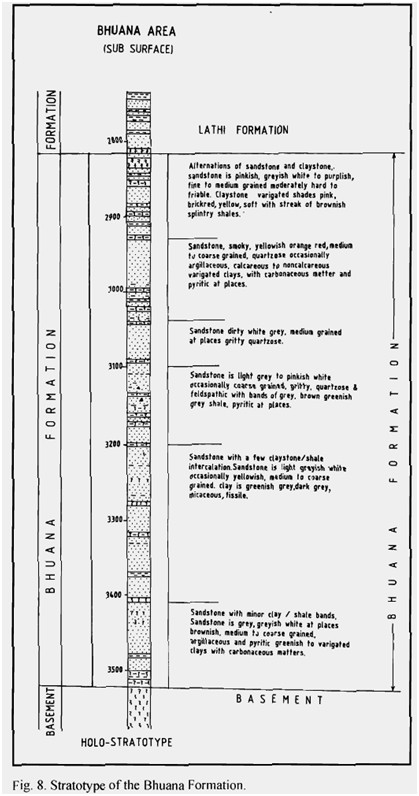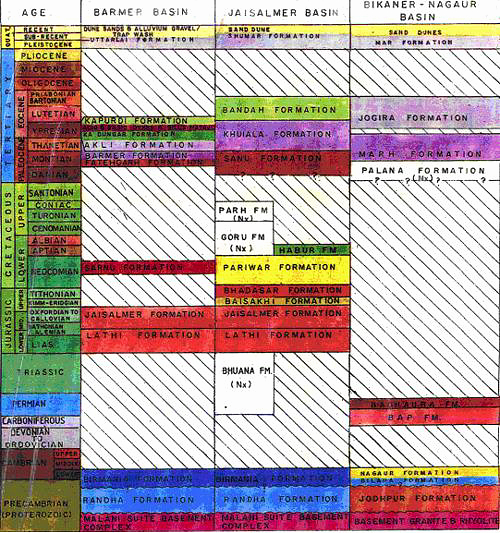Bhuana Fm
Type Locality and Naming
SUBSURFACE. Lunar Well. Maximum thickness recorded is 707m in Bhuana Well. [Original Publication: Misra, P.C., Singh, N.P., Sharma, D.C., Upadhyay, H., Kakroo, A.K. and Saini, M.L. 1993. Lithostratigraphy of West Rajasthan basins, ONGC report (Unpublished)]. Reference well: Well Lunar-1, interval 2220-2751.5 m
Synonyms: The entire Permo-Triassic sequence was first designated by Dasgupta (1974) as the Karampur Fm for the Permian Sequence and the Shumarwali Fm for the Triassic sequence but lithologically there is no break to justify two formations; as a result, Misra et.al. (1993) introduced a new name the Bhuana Formation after the name of the area where it was encountered first in the sub-surface while drilling.
Lithology and Thickness
Clayey sandstone. The formation recorded in the type area Bhuana well is represented by sandstone with intercalations of claystone and shale. The sandstone is grey to greyish white, at places brownish white, medium- to coarse-grained, occasionally argillaceous and pyritic. In upper part, sandstone is generally pinkish white to pink and even purple colored, fine- to medium-grained, moderately hard to friable. The intercalated shales are grey to brownish grey, at places greenish grey, fissile, splintery, pyritic with occasional presence of carbonaceous matter. Clay is variegated with shades of pink, brick red, yellow and moderately hard to soft.
[Figure 1: Stratotype of Bhuana Formation, Mesozoic Lithostratigraphy of the Jaisalmer Basin, Rajasthan, Journal of the Paleontological Society of India, Vol. 51(2) (after Singh N.P, 2006)]
Relationships and Distribution
Lower contact
Major unconformity: A clastic sequence associated with shale of the formation rests directly on greenish, grey schists and phyllites of Precambrian age indicating a major hiatus from Cambrian to Permian.
Upper contact
GeoJSON
Fossils
The formation is devoid of microfauna. However, various species of palynoflora have been recorded from the sediments of wells Shumarwali Talai-2 and Bhuana-1 (Lukose and Misra, 1980).
Age
Depositional setting
The formation seems to have deposited in fluvial to shallow marine environment. Lukose and Misra (Ibid) have interpreted marine and non-marine sequences based on the presence and absence of microplanktons.
Additional Information

